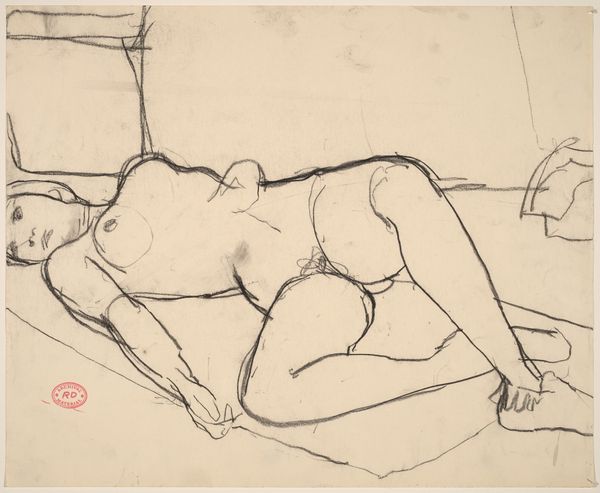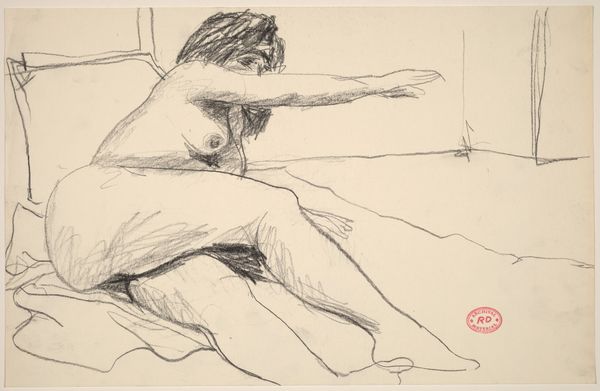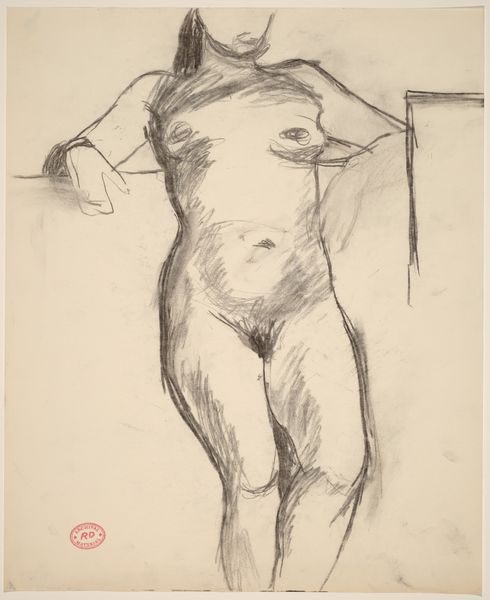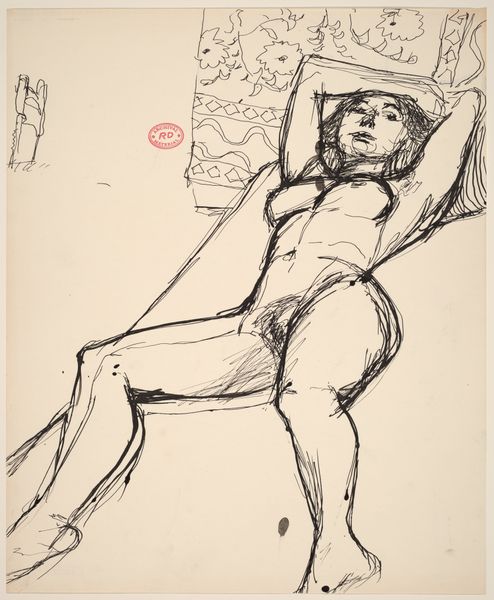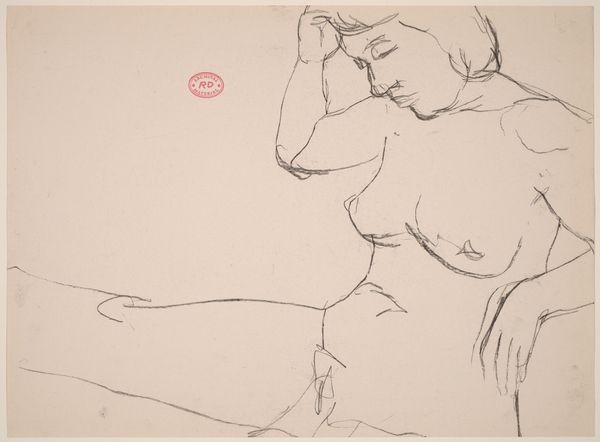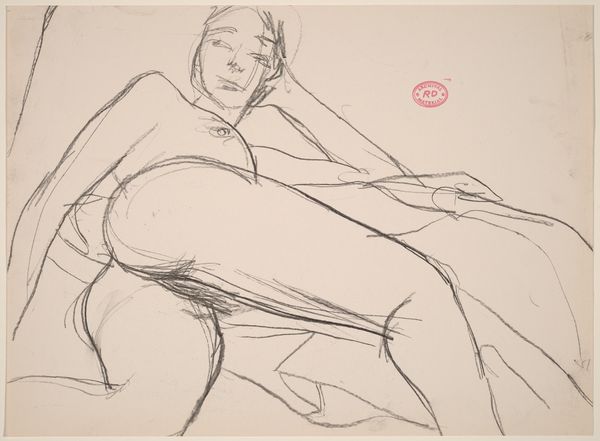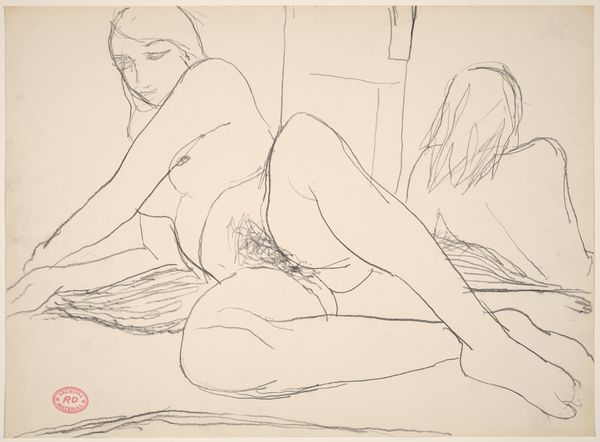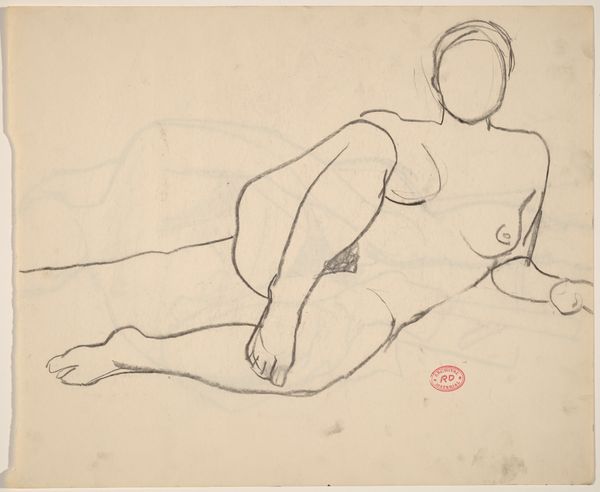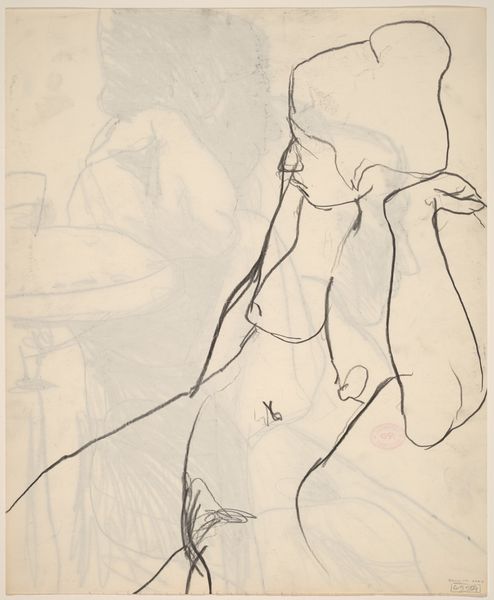![Untitled [seated female nude leaning on table] by Richard Diebenkorn](/_next/image?url=https%3A%2F%2Fd2w8kbdekdi1gv.cloudfront.net%2FeyJidWNrZXQiOiAiYXJ0ZXJhLWltYWdlcy1idWNrZXQiLCAia2V5IjogImFydHdvcmtzLzQwYzAzNmIyLWE4YjAtNDU1Yi1iZjA3LTRkNzA2YjE1Mjg3NS80MGMwMzZiMi1hOGIwLTQ1NWItYmYwNy00ZDcwNmIxNTI4NzVfZnVsbC5qcGciLCAiZWRpdHMiOiB7InJlc2l6ZSI6IHsid2lkdGgiOiAxOTIwLCAiaGVpZ2h0IjogMTkyMCwgImZpdCI6ICJpbnNpZGUifX19&w=3840&q=75)
Untitled [seated female nude leaning on table] 1955 - 1967
0:00
0:00
drawing, ink
#
portrait
#
drawing
#
ink drawing
#
figuration
#
bay-area-figurative-movement
#
ink
#
portrait drawing
#
nude
Dimensions: overall: 31.8 x 43.2 cm (12 1/2 x 17 in.)
Copyright: National Gallery of Art: CC0 1.0
Editor: Here we have Richard Diebenkorn’s "Untitled [seated female nude leaning on table]," created between 1955 and 1967, an ink drawing. It’s quite simple, almost austere, with its stark black lines against the white ground. What do you see in this piece? Curator: Immediately, I consider the process. Diebenkorn chose ink, a readily available material. How does its fluidity and relative permanence – compared to, say, charcoal – inform our understanding? Is this a study, a finished piece, or both? Editor: That’s interesting, I hadn’t thought about the choice of ink itself. I just saw it as a quick sketch. Curator: And the speed of execution that ink affords – a record of the artist’s hand and eye working in tandem. We need to consider Diebenkorn’s broader artistic practice and the labor involved. How did the studio setting impact the relationship between the artist and the model? Editor: So you are thinking about the whole system of artistic production involved, the artist, the model, the physical making of the drawing. Curator: Precisely. Think too, about the mid-century context. Abstract Expressionism was at its height. By returning to figuration, Diebenkorn made a conscious choice regarding his practice and potential reception. What about the social implication? The gender dynamic. What power dynamic, for example, plays into the choice to depict a nude female figure? Editor: It really changes how I look at it. Considering the material choices and social context provides a whole new level of insight. Curator: Exactly. Art exists within networks of production, labor, and social relations. Examining these factors is central to understanding art's meaning and value. Editor: That's given me a lot to think about. Thanks.
Comments
No comments
Be the first to comment and join the conversation on the ultimate creative platform.
